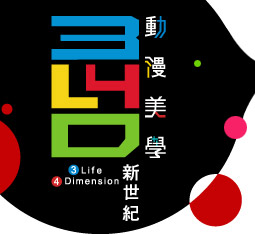長期從事藝術總監(Curator)工作的我,常常被問到哪些作品是好作品,什麼樣的藝術家是好藝術家。提這類問題的人大部分是對藝術外行的人。雖然那些提問是最初步的問題,但是我認為它也是對藝術重要而且最根本的提問。對這樣的問題每個人都會有不同的回答,而我認為,好的藝術家是‘開闢新的藝術同時具備藝術魂’的人。
在現代美術的旗幟之下,在膚淺地、輕易地做出作品的現代時代,對現代藝術說‘藝術魂’聽起來可能有點迂腐,但我還是認為藝術與其他活動最可區別的地方就是精神上的作用。就因為這理由我才強調藝術魂。
我在參觀許多展會或我自己主辦展會上面對許多作家的時候,一直想起的一個主題就是“藝術有什麼樣的作用,藝術家對人類、為人類做了怎樣的貢獻?”當然這不只是我的主題,而是從古到今許多美學者和美術家研究的題目。但是因為對藝術本體,藝術的意義和作用的認識在各個時代一直是有變化的,所以今天它們仍然是有研究價值的主題。我自己也想到時候對此方面進行深入地研究和整理。可以很明確地說,藝術的各個方面在現代社會與在過去社會相比有了很大的差異。在這許多變化之中,我想從藝術人本主義的角度來陳述本文章。
我認為現代美術帶來的最大惠澤就是大眾能夠不論身份自由地享受藝術。過去很長時間中藝術家只為少數特權階級進行活動,其結果是使藝術與多數人產生了距離。從這方面來看,現代美術在與大眾靠近這方面有了很大的意義。而且我認為在這方面,過去的民眾藝術家(Pop artist)的貢獻是很偉大的。其實民眾藝術家常用的漫畫或漫畫式的繪畫是從古代就已經開始使用的,但使它成為高級藝術則是民眾藝術家的功勞。不過現在仍然存在著把漫畫式美術(cartoon like, ‘漫畫式’的詞語不是很正確的表現,但是因為目前沒有其正確的名稱所以該詞來表達)看待低級藝術的現象。
就是還有“因為兒童的美術(Childish),容易、水準低,所以是淺薄的美術”的印象。但是這樣的看法是的確有錯誤的。藝術只存在著情趣的差異而已。我想對只追求表面上優雅的人說一句一位美學者(Santayana)的話,“藝術是需要用明淨的眼睛來看的,自己為具備明淨的眼睛要不斷地努力”。
那麼,漫畫式的美術得到大眾積極支持的原因是什麼? 一種漫畫式美術的屬性以及其最大的優點就是使用容易的大眾語言來加速溝通。而且,他們的作品是很純樸的(想想那些由表達非常私密性的想法或者回避普遍性的思考方式來意圖斷絕溝通的作品),甚至兒童或文盲也可以共感。這就是漫畫式美術具有的特別的生命力。
有些人說近來的漫畫式美術的流行傾向是大眾藝術(Pop art)以後的漫畫式美術的復活,但是像我在本文章的前部說的一樣,漫畫或漫畫式美術在過去也是一直存在的,只是思考和表現方法不一樣而已。到了現代,不只是油畫開發了利用自動機械等各樣媒體的新方法,並隨著時代發展和變化有了新的肖像(Character)----特別是很受歡迎的與虛擬結合的圖像,與其他藝術類型一樣,漫畫式美術也會因動員無窮的想像力並與新的媒體結合起來而有繼續發展。
總結來說,我想肯定地說漫畫式美術是‘與大眾的呼吸最接近的藝術’。雖然這種想法可能是很迂腐的,但是對我來說,這是與我對藝術的信念----“藝術屬於人,為了人,成於人”的“人本主義”觀點相符。
以這樣的觀點來看,藝術家的責任其實是非常重大的。(當時民眾藝術家被批評為企圖謀反藝術界的黑旨意者,但是經過瞭解我們就知道他們是藝術界的民主主義者並且是人本主義者。他們並沒有屈服於社會上的批評。)得到名聲的藝術家需要對大眾的負責,因為不管他/她願意或者不願意, 藝術家在精神上或者在知性上都位於引導社會的地位。我作為一個藝術界成員,再也不想面對已經得到名聲的藝術家們像不懂事又很自私的演員似的做讓我們很失望的行為。
(翻譯:曹淳鉉、張軍) |
As a senior curator, I have been frequently asked which works of art are good works and what kinds of artists are good artists. Questions like these are often raised by people who are not trained in art. Although these questions are quite basic, I find them vital and fundamental to the understanding of art. And the answers to these questions may vary from individual to individual. To me, a good artist is the one that “creates new art and carries the soul of art at the same time”.
Under the name of modern art and in an age when works are produced without much depth and effort, it might sound conservative to use the term “the soul of art” to describe modern art. But I think what differentiates art and other activities is its influence upon our spiritual life, and that’s why I still place an emphasis on “the soul of art”
When visiting various art exhibitions or when I encounter many artists on exhibitions curated by myself, I always contemplate one question, “What functions does art have? What have artists contributed to humanity and for human beings?” Certainly, this is not my question alone, but a topic widely explored by scholars of art from ancient to modern times. This question remains a significant research topic, as how people perceive the subject, meaning, and function of art in one era is different from another. I myself am also considering further researches and studies into this aspect. But what can be sure is that art in the modern times is very different from that in the past from every aspect. Among all the developments and changes that art has undergone, I would like to discuss the issue from art humanism.
In my opinion, the most wonderful thing that modern art brings about is that common people have great freedom of enjoying art regardless of who they are or what they do. In the past, artists used to serve a few people of privileged status only. The result is a distance thus formed between art and most people. From this aspect, modern art is very significant for being accessible for the public. Pop artists, in particular, have great contributions to this. As a matter of fact, comics or cartoon like paintings that pop artists usually adopt can be traced back to the ancient times, but they are never deemed as high art until pop artists started to utilize them. But we have to point out that nowadays, the view that cartoon like art is of low art hasn’t really gone away (“cartoon like” is not a proper term to use, but so far there hasn’t been any better name for it yet).
And then there exists the impression that children’s art is easy and of low class; therefore shallow art. A view as such, however, is incorrect. In the art world, there is only difference in interests. To those who care about a surface elegance only, I would like to quote Santayana, a scholar of aesthetics, “appreciation of art requires a pair of clear eyes; one should never stop working to equip himself with clear eyes.”
Then, what is the reason behind the popularity of cartoon like art? The answer lies in its characteristics and the merit of using everyday language to facilitate communication with the public. Moreover, their works are plain and simple (compare to those express private thoughts or shy away from universal thinking logic so as to close down possibilities for communication); even children and illiterates are able to share some feelings upon their viewing. This is the power or life unique to cartoon like art.
Some have commented that the current popularity of cartoon like art is nothing but a revival of cartoon like art after Pop art. But as mentioned above, comics and cartoon like art has long existed. What have been changing is the artist’s thinking and expression methods. Today, oil paintings not only has adopted new methods like auto machine and other media, but generated new characters as they develop with time and changes—particularly, images combined with virtual reality are well accepted. Like other art categories, cartoon like art also continue to develop itself by mobilizing imagination and utilizing new media.
In short, there is no doubt that cartoon like art is “the art closest to the public”. Although this isn’t a novel idea, it expresses my belief in art, which is in line with the humanism viewpoint that “art belongs to man, for man and by man”.
Accordingly, artists’ responsibility is very heavy. (There was a time when pop artists were criticized as traitors to the art world, but with more and more understanding we come to know that they are the democratists as well as the humanists of the art world. And they did not succumb to these unfavorable critiques.) Artists who have obtained fame need to be responsible for the public, because artists, whether he/she likes it or not, are looked upon as a guru or intellectual mentors who exert influence upon the society. As a member of the art world, I certainly do not wish to be further disappointed by some well-known artists who act more like a selfish actor.
(Translated by Hui-wen Cheng) |


